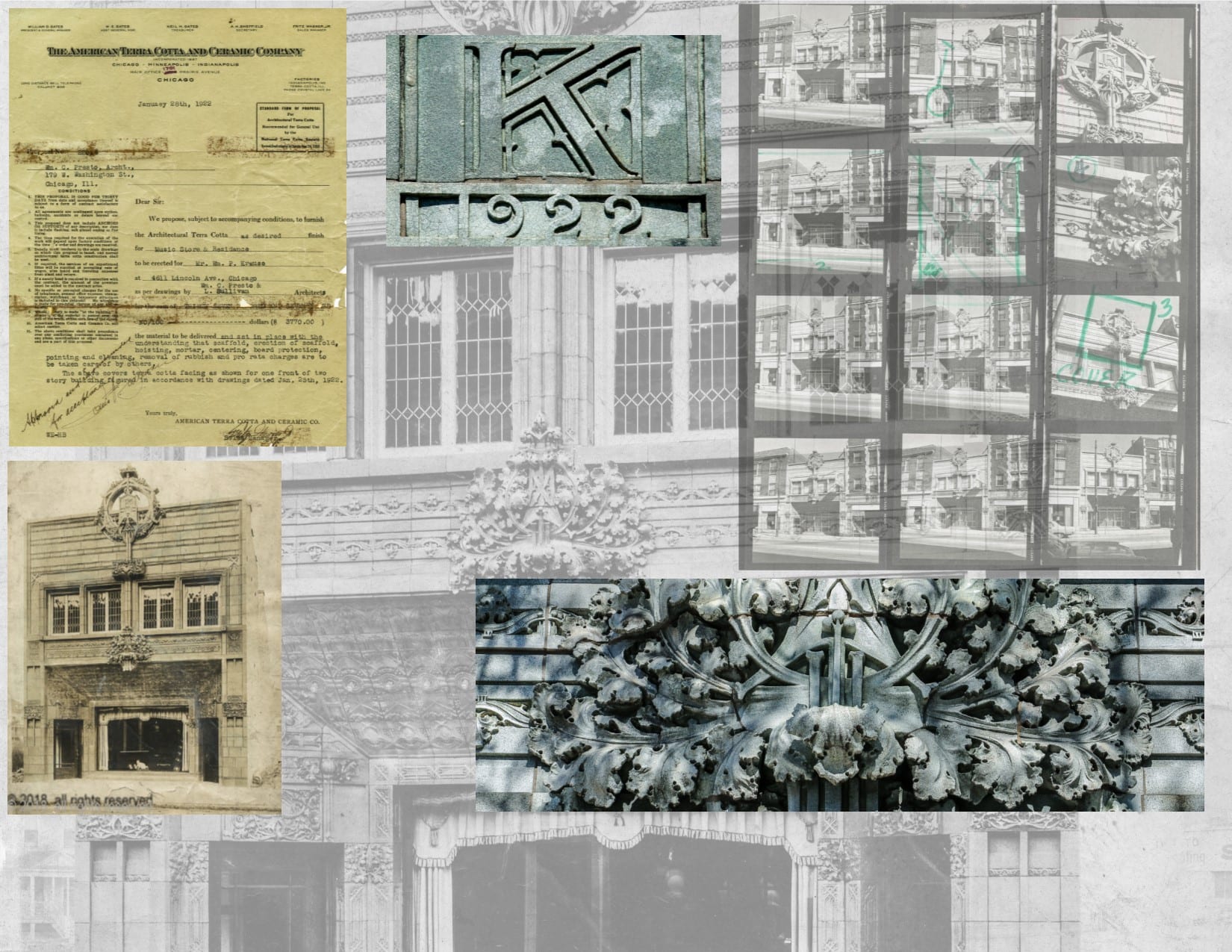a photographic study of louis sullivan's last commission: krause music store facade
This entry was posted on March 23 2022 by Eric
 the following image gallery presents the landmark krause music store, well-known as louis sullivan’s final commission, a bookend on his iconic but tragically undervalued career. though technically sullivan was an “associate architect,” the façade thoroughly shows his hand, and hardly strays from the famous aesthetic vision embodied in the rest of his work. an official opinion, on record in the burnham library stated, “it is not one of his best designs, but again we have only to compare it with the conventional facades of the adjacent stores which have since been built around it, to realize as forcefully as ever that even in his least significant works sullivan was still a master.”
the following image gallery presents the landmark krause music store, well-known as louis sullivan’s final commission, a bookend on his iconic but tragically undervalued career. though technically sullivan was an “associate architect,” the façade thoroughly shows his hand, and hardly strays from the famous aesthetic vision embodied in the rest of his work. an official opinion, on record in the burnham library stated, “it is not one of his best designs, but again we have only to compare it with the conventional facades of the adjacent stores which have since been built around it, to realize as forcefully as ever that even in his least significant works sullivan was still a master.”

music salesman william krause first tapped his neighbor william presto to create a storefront that would garner attention from passing traffic on lincoln avenue. though presto was not known for inspired ornamentation he enlisted sullivan (with whom he’d worked with as a draftsman in 1919) to bolster the façade. presto expected “the poet of the skyscraper” to reject the commission, but found sullivan was in fact destitute, living on the charity of friends and unable to magnetize work as his distinct style was eclipsed in popularity by beaux-arts and other architectural modes of the era. sullivan was in the midst of writing his autobiography and detailing his approach to ornament in drawings when presto’s invitation fell into his lap.

in the end the krause music shop would resemble somewhat sullivan’s earlier jewel box buildings, with spare structural innovation but his characteristically florid ornamentation, with foliate embellishing a block-like building layout and strongly symmetrical facade. in particular, the soft green terra cotta was sullivan’s major contribution, being comprised of a unique glaze with an attractive blue-green color composite and mottled texture.




even through the struggle of his final years, sullivan’s final building commission exhibits a powerful commitment to an original aesthetic vision; the storefront stands apart from its neighbors even on a humble commercial strip. a central high-relief “key” on the upper story of the two-story building complements the delicately-designed border around the entrance, which recedes deeply toward a large picture window lit by marquee lights.

testament to sullivan’s long relationship with his manufacturers, the american terra cotta company executed the work, and supplied material without markup for a cost of $3,770. in fact, they also provided free office space to sullivan during this time and until his death in 1924.


krause’s store sold pianos and sheet music, as well as radios, for a little less than a decade, with the onslaught of the great depression spelling the end. william krause commit suicide in the upstairs apartment and his widow rented the building thereafter to a funeral home.




from 1929 on, and in fact for the majority of its lifetime, the building functioned as a funeral parlor. it suffered neglect and alteration over the decades, until finally in 2005 the current owners (studio v designs) undertook a major restoration. with the help of preservation architects they remodeled and adapted the interior while restoring the color (having been bleached) and original brilliance of the exterior.










This entry was posted in , Miscellaneous, Bldg. 51, Events & Announcements, Featured Posts & Bldg. 51 Feed on March 23 2022 by Eric
WORDLWIDE SHIPPING
If required, please contact an Urban Remains sales associate.
NEW PRODUCTS DAILY
Check back daily as we are constantly adding new products.
PREMIUM SUPPORT
We're here to help answer any question. Contact us anytime!
SALES & PROMOTIONS
Join our newsletter to get the latest information
























